In the heartland of America’s Northwest awaits a playground for avid outdoorsmen, an Eden for those who seek both solitude and adventure — Montana, the Big Sky Country. If you are a fan of the unbeatable rush of flushing out wild birds, Montana upland bird hunting might just be your next affair with magnificence.
It’s a great way to enjoy the natural beauty of this state up close while participating in an activity that has been a cornerstone of American pastoral tradition for centuries. If Montana’s wilderness and its bountiful game bird species have sparked your interest, you’re exactly where you should be.
This article is designed to give you detailed insights into 5 key aspects of upland bird hunting in Montana. Everything from species diversity and hunting regulations to premier outfitters, we’ve got it all covered.
- Related article: Hunting Adventures in Montana
Whether you’re an experienced hunter, or just aspiring to intersperse your backyard chicken-raising hobby with a little more adventure, this guide is for you. So, come on in, and let’s embark on this exquisite Montana bird-hunting adventure together.
7 Key Takeaways on Montana Upland Bird Hunting
- Montana’s Upland Game Bird Hunting is not just shooting; it’s a comprehensive sport requiring strategy, skill, and a deep understanding of bird behavior and flight patterns.
- Before you venture out, secure the right permit and be aware of the state’s diverse bird hunting regulations, including seasonality, bag limits, and Upland Game Bird Stamp requirements.
- From understanding the Montana upland bird season dates to the different regulations, these tips are crucial for a successful and enjoyable hunt.
- The state is home to 9 different species of upland game birds, each with its unique habitat and feeding preferences, providing a diverse hunting experience.
- Whether you’re targeting Sharp-tailed Grouse or Ringneck Pheasants, top Montana outfitters such as Montana Upland Outfitters provide expert guidance and access to prime hunting grounds.
- Understanding the various types of licenses, their fees, and availability offered by Montana’s Fish, Wildlife & Parks department for both resident and non-resident hunters is key to a successful hunt.
- Knowing when and where to hunt legally, as well as understanding hunting guidelines and bag limits, is essential for a successful and sustainable experience.
About Montana Upland Game Bird Hunting
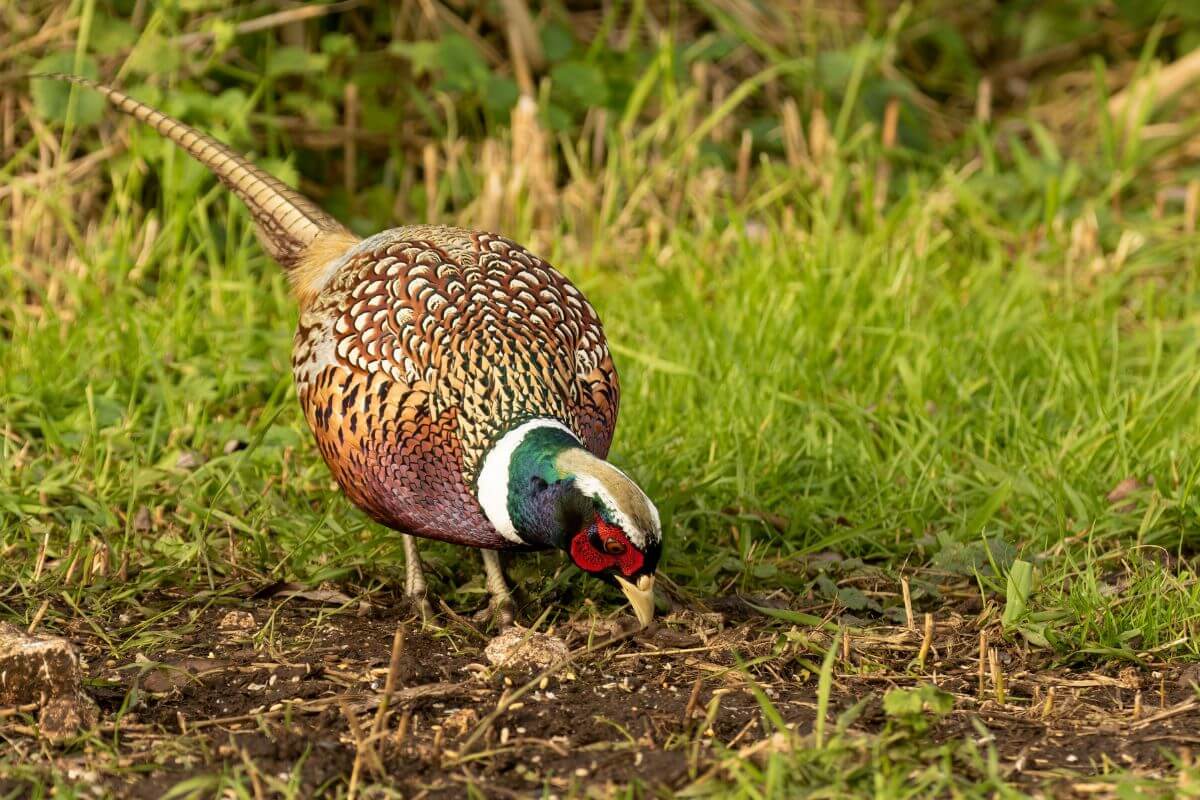
Montana’s upland bird hunting experience is a captivating blend of wilderness encounters, diverse terrain navigation, and an ethereal connection with the native fauna. So as you put on your gear and prepare for an unforgettable Montana hunt, remember these tips to enrich your outing.
1. Montana Upland Game Bird Species
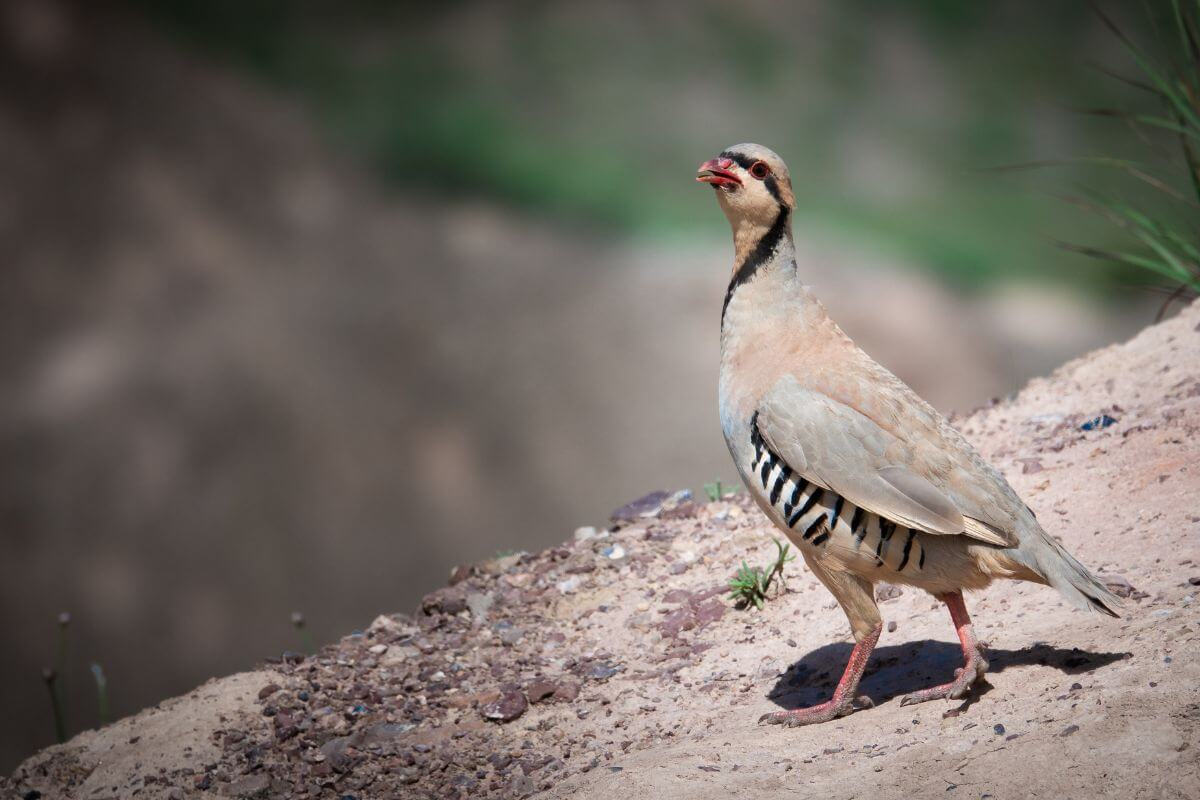
Montana isn’t just big skies; it’s also a birdwatcher’s paradise and an upland hunter’s dream. This expansive state is home to a rich variety of environments – from dense forests to open grasslands.
I was excited to learn that there are not just a handful, but 9 different species of upland game birds to spot and hunt in these diverse terrains including the Ring-necked Pheasants, Gray Partridges, and Merriam’s Wild Turkeys as among the most sought-after and popular wild birds here in Montana.
It’s fascinating to note that while the Ring-necked Pheasants and Gray Partridges aren’t native to Montana, they’ve certainly made themselves at home and are frequently spotted in the wheat fields and brushy covers.
Want to ruffle some feathers? Below are the 9 game bird species in Montana, along with information on their habitat and food habits:
| Upland Game Bird | Description | Habitat | Food Habits |
|---|---|---|---|
| Chukar | Chicken-like game birds with a plump body, short legs, and a small round head. | Steep, rocky, semi-arid country, cheatgrass and brushy draws | Green grass leaves, cheatgrass seeds, and grains. |
| Dusky Grouse | Also known as the Blue Grouse, it is the largest of Montana’s 3 species of mountain grouse. | Winter: High elevations in conifer stands. Early spring: They descend to lower altitudes. | Winter: Mainly conifer needles. Summer: A mixed diet of insects, green plants, and berries. |
| Gray Partridge | A portly game bird with a rusty face, tail, streaks down the sides, and a dark belly patch. | A mixture of cultivated and noncultivated land; grasslands interspersed with wheat fields, weed patches, and brushy cover. | Winter and Fall: Waste grain Summer: Weed seeds and insects |
| Ring-necked Pheasant | Winter and Fall: Waste grain Summer: Weed seeds and insects | Open grassland and cropland areas with brushy cover, especially along watercourses. | Wheat and barley |
| Ruffed Grouse | No other grouse has the fan-shaped, distinctively banded tail and black ruff. | Dense, brushy, mixed-conifer, and deciduous tree cover, often along stream bottoms. | Winter: Deciduous tree buds and shrubs Summer: A mixed diet of insects, green plants, and berries. |
| Sage-Grouse | North America’s largest grouse. | Sagebrush habitat types | Leaves, buds, stems, flowers, fruit, and insects, but mainly leaves year-round. |
| Sharp-tailed Grouse | Also known as the sharptail or fire grouse is a medium-sized prairie grouse. | Grasslands interspersed with shrub and brush-filled coulees | Seeds, grasses, fruit, and insects |
| Spruce Grouse | Nicknamed “fool hen” for its lack of fear of humans, they allow humans to approach within a few feet before flying. | Dense forest types such as alpine fir, Engelmann spruce, or lodgepole pine. | Fall through Spring: Conifer needles Summer: Herbaceous vegetation and insects |
| Wild Turkey | Large size, iridescent bronze plumage, bare blue head. | Open ponderosa pine forest in rugged terrain, interspersed with grassland and brushy draws. | Insects (primarily grasshoppers), bearberry, snowberry, and skunk brush sumac fruits, grass leaves and stems, and Carex seeds; |
Each of these species has its unique characteristics, preferred habitats, and food habits that make them a thrilling challenge for upland hunters seeking to bag wild birds in Montana’s diverse landscapes.
2. Montana Upland Game Bird Hunting Licenses and Fees
If you’re itching to get out there and test your aim, you’re going to need a license. The Montana Fish, Wildlife & Parks Department offers a variety of options for both residents and non-residents alike.
Here’s a quick rundown of the Upland Game Bird hunting licenses in Montana:
- Upland Game Bird – This is your standard license for hunting any upland game bird in Montana. For residents aged 12-17, 62 or older, and the disabled, the purchase cost is half ($3.75). Nonresident 12-17-year-olds can also buy for half price ($55).
- 3-Day Upland Game Bird – If you’re a non-resident and just here for a short hunting trip, this 3-day option is for you. The license cannot be used to hunt sage grouse at any time, and it is also not valid for hunting ring-neck pheasants during the first week of the hunting season.
- Upland Game Bird 3-Day Preserve – This one’s specifically for non-residents and is valid only on Shooting Preserves that are licensed by the state. You also need a Conservation and Base Hunting License.
- Nonresident Montana Native Upland Game Bird License – This is for individuals who were born in Montana and have a current resident relative.
- Turkey with Upland Game Bird – This is a prerequisite for the Upland Game Bird license.
- Bird Dog Training License – This license is required for anyone training bird dogs using game birds not raised in captivity on private or public land. No license is needed for captive-reared birds. The license is free for both residents and nonresidents aged 12-17.
The corresponding fees and availability of these licenses can be found in the chart below:
| Upland Game Bird License | Resident Fee | Nonresident Fee | Availability |
| Upland Game Bird | $7.50 | $110 | Over the Counter |
| 3 Day Upland Game Bird | N/A | $50 | Over the Counter |
| Upland Game Bird 3-Day Preserve | N/A | $20 | Over the Counter |
| Nonresident Montana Native Upland Game Bird License | N/A | $55 | Over the Counter |
| Turkey with Upland Game Bird | $6.50 | $57.50 | Over the Counter |
| Turkey without Upland Game Bird | N/A | $115 | Over the Counter |
| Bird Dog Training License | $5 | $10 | Over the Counter |
These diverse licenses cater to bird-hunting individuals, including both residents and non-residents, who are interested in upland game bird hunting within Montana.
3. Montana Upland Game Bird Hunting Season Dates
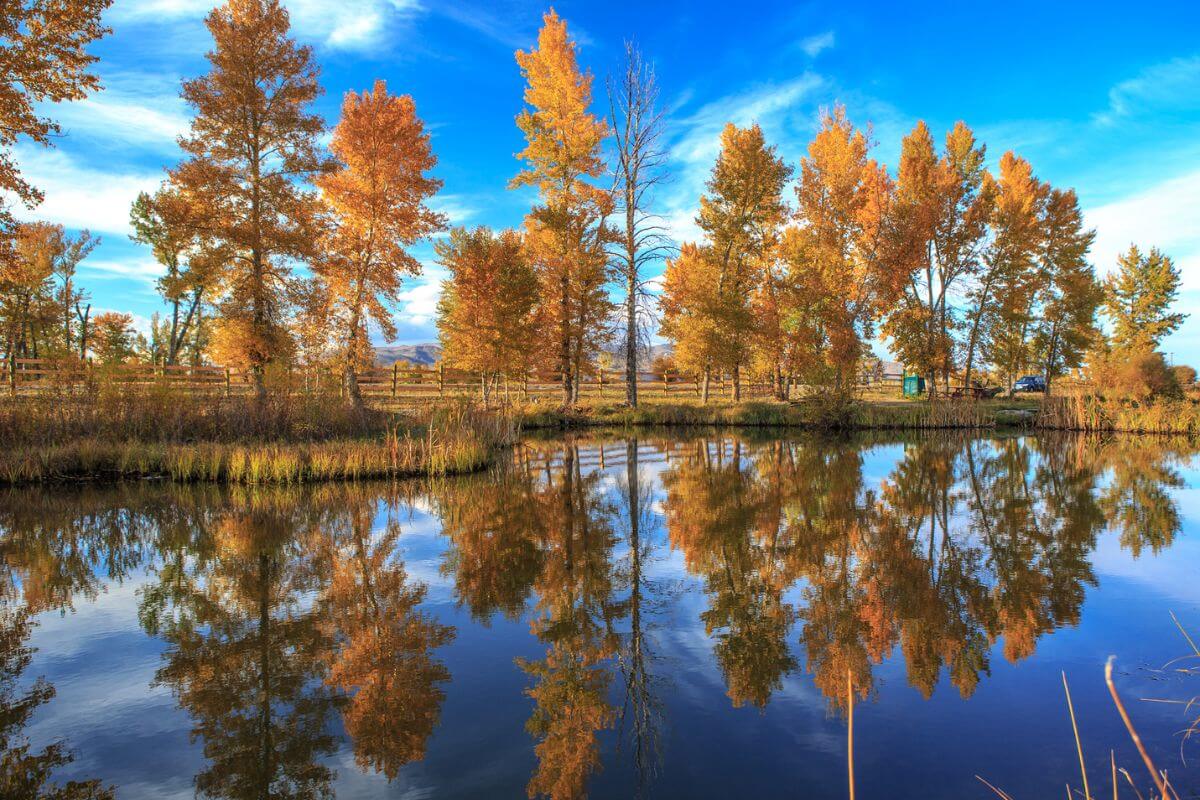
Knowing when Montana’s upland bird hunting seasons are open and shut is vital for any budding or veteran hunter. Here are the key dates you need to have in your mental toolkit:
- Mountain Grouse – September 1 – January 1
- Partridge – September 1 – January 1 (with an extension to January 10 in a slice of Carbon County)
- Ring-necked Pheasant – October 12 – January 1
- Youth Hunt – September 21 – 22
- Sage Grouse – September 1 – September 30
- Sharp-tailed Grouse – September 1 – January 1
- Falconry – September 1 – March 31
- Spring Turkey – April 15 – May 31
- Fall Turkey – September 1 – January 1.
It’s like I always say, timing is everything. Understanding these dates can help you enjoy the excellent hunting that Montana has to offer, all within the guidelines set to maintain sustainable wildlife populations.
4. Montana Upland Game Bird Hunting Regulations

Hunting birds in Montana has rules – like any good game, there are guidelines to keep things fair and sustainable. Think of it like sporting etiquette for the wild.
Here’s a quick rundown of what every Montana upland bird hunter needs to be aware of:
- Bird Dog Training – You’re free to train your bird-hunting dogs, as long as you’ve got a specific license. Montana residents enjoy a training window between August 1 to March 31, while non-residents get an extra two weeks from August 15.
- License Validation and Tagging of Turkeys – If you’re carrying turkey tags, always validate the kill date. It can be electronic or old-school cut and dry.
- Means of Take – Upland game birds can only be hunted with traditional hunting gear like firearms, archery, or falconry.
- Nontoxic Shot – While on federal refuges or waterfowl production areas, you’re required to use nontoxic shots approved at the federal level.
- Shooting Preserves (Private) – Even on private shooting preserves, you’ll need specific licenses to comply with the law. Residents can use their upland game bird license, while non-residents have the option of a 3-day Shooting Preserve License.
- Evidence of Sex and Species – Unlawful to possess or transport certain birds in the spring without evidence of sex, or to transport certain species without a fully feathered wing for identification.
- Stream Access – You can lawfully hunt between the ordinary high-water mark of rivers and streams, but getting permission to retrieve birds that fall above that mark is always polite.
- Possession Limit – The number of birds you can have in any form (fresh, frozen, smoked, you name it) is restricted.
Here’s a quick peek at the bag limit per day and the possession limit for some of the most commonly hunted Montana upland birds:
| Upland Game Bird | Bag Limit Per Day | Possession Limit |
| Chukar | 8 | 32 |
| Dusky Grouse | 3 | 12 |
| Gray Partridge | 8 | 32 |
| Ring-Necked Pheasant | 3 | 9 |
| Ruffed Grouse | 3 | 12 |
| Sage-Grouse | 2 | 4 |
| Sharp-tailed Grouse | 4 | 16 |
| Spruce Grouse | 3 | 12 |
Montana’s bird hunting regulations are essential to ensure a rewarding and legally sound experience. If you’re training your bird dog, keep an eye on the calendar, know your bag and possession limits, and always follow the rules on identifying and validating your hunt.
5. Montana Outfitters for Upland Game Bird Hunting
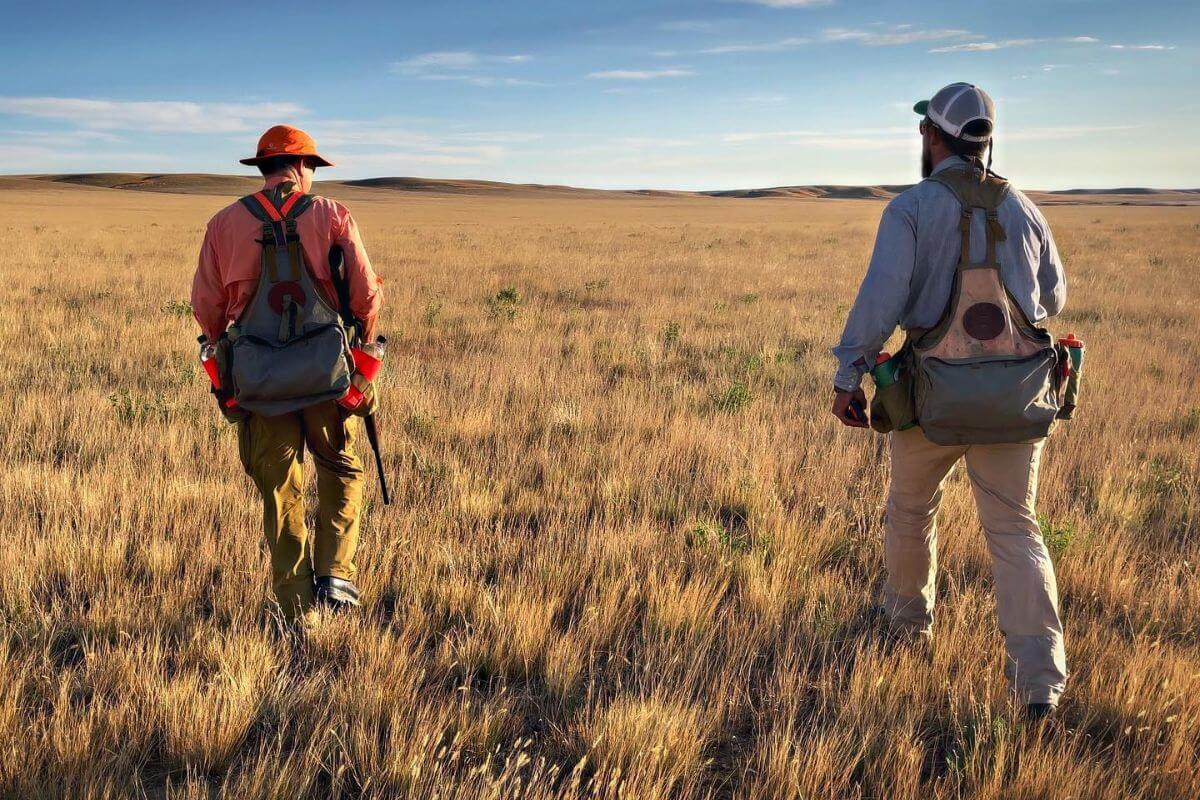
You’ve got your gear, you’re itching for adventure; now all that’s left is deciding where to go! And Montana has some top-tier Upland Game Bird Outfitters you don’t want to miss:
- Montana Upland Outfitters – This place is an upland bird oasis, known as Montana’s best Sharp-tailed Grouse, Pheasant, and Hungarian Partridge hunting on huge expanses of private land. You can even camp on the edges of Eastern Montana’s wild badlands for a rugged vibe.
- Cottonwood Camp – If you’re after Ringneck Pheasant, Hungarian Partridge, and more, Bighorn Valley’s thousands of acres of wheat fields and grasslands provide the perfect stage. Trust me, it’s like walking into a bird-hunter’s paradise.
- Dave Brown Outfitters – With over 120,000 acres of hunting grounds, guided trips with Dave Brown Outfitters are more than a few rungs up the ladder. Their areas are popular for wild hunting for Sharptails, Sage Grouse, Hungarian Partridge, and Pheasants. ‘Wild’ here means you’ve got some of the best hunter success rates anywhere.
These guys have their ear to the ground and regularly take passionate hunters to strategic, well-managed lands that promise more sightings and a great overall experience.
From camping on the edge of badlands to swooping through Bighorn Valley, they offer you the best shots – both literally and metaphorically. So why wait? Get that trigger finger ready!
Montana Upland Bird Hunting Final Thoughts
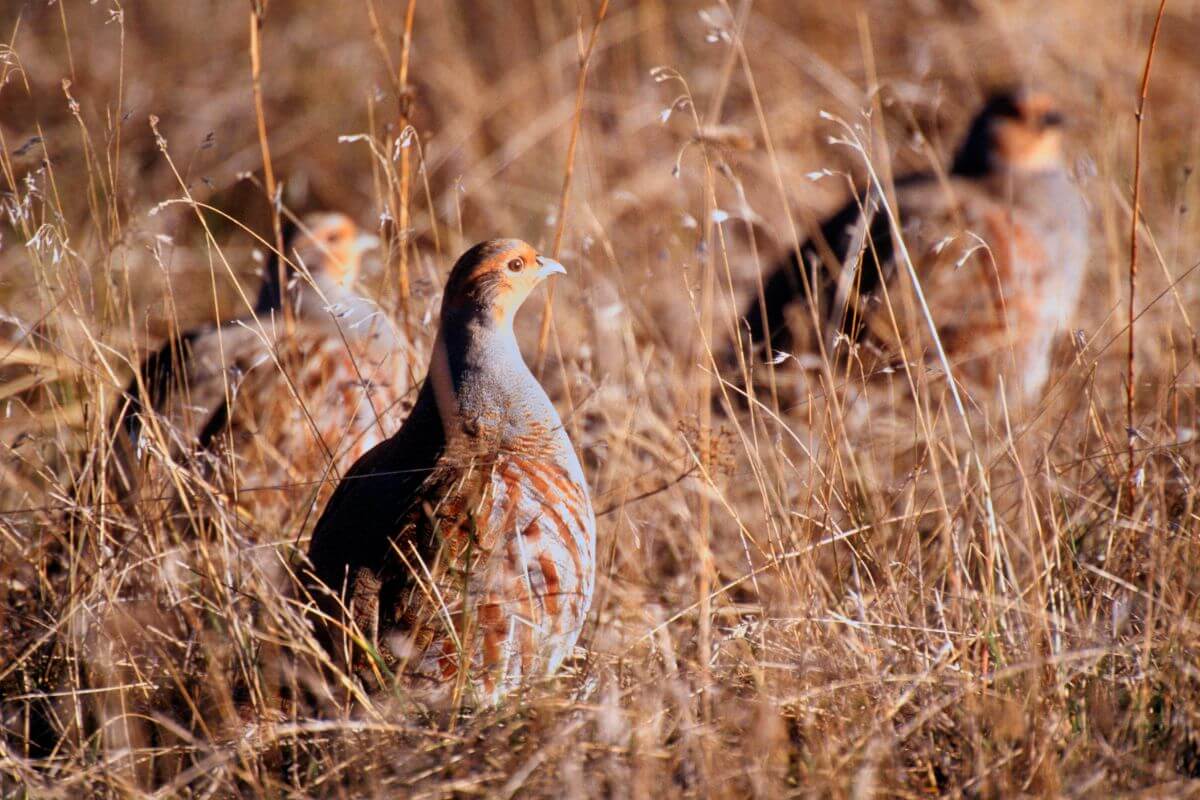
Hunting upland game birds in Big Sky Country is an unparalleled experience, offering a rich discovery of diverse bird species and breathtaking habitats.
Montana’s open grasslands, wooded areas, and expansive fields provide the perfect stage for an adventure unlike any other. But it’s not just about the thrill of the shot; it’s about respecting nature, adhering to rules, and contributing to the preservation of the state’s vibrant birdlife.
Understanding licensing, regulations, and the varied Montana landscapes, across which different bird species are found, ensures you’re not only legally compliant but ethically responsible in your hunting pursuits.
So as you set out on your Montana upland bird hunting expedition, remember to immerse yourself fully in the experience, respecting the birds, the landscape, and your security in the process. Embrace the adrenaline, celebrate each successful trail, and above all, savor the connection you’ll establish with Montana’s remarkable avian community.
Montana Upland Game Bird Hunting FAQs
1. Where Is the Best Upland Hunting in Montana?
The best areas for Montana bird hunts are characterized by wide open spaces and grassy cover, with South-Central Montana standing out as one of the nation’s premier locations for exciting upland bird hunting experiences.
2. What Birds Are Hunted in Montana?
Montana offers diverse opportunities for bird hunting, with popular species including ring-necked pheasants, Hungarian partridges, sharptail grouse, sage grouse, and various species of ducks and geese.
Hunters in the state can enjoy a mix of upland and waterfowl hunting experiences, taking advantage of Montana’s varied landscapes and ecosystems.
3. How Much Is an Upland Bird License in Montana?
In Montana, the upland game bird license fees typically range from around $7.50 for residents to $110 for nonresidents.
4. What Is the Upland Bird Season for Montana?
Upland bird hunting seasons in Montana vary depending on the specific species. Generally, the upland bird season starts in September and runs through January.
5. Does Montana Have Good Pheasant Hunting?
Montana is known for offering good opportunities for hunting pheasants. With its diverse landscapes and agricultural fields providing suitable habitats, Montana is a popular destination for pheasant hunters.
Get captivated by Montana’s allure in the articles below:
- Hunt Wolves in Montana
- Swan Hunting in Montana
- Hunt With a Muzzleloader in Montana
- Do-It-Yourself Montana Hunts
- https://fwp.mt.gov/hunt/seasons
- https://fieldguide.mt.gov/displaySpecies.aspx?family=Phasianidae
- https://fwp.mt.gov/hunt/regulations/turkey
- https://fwp.mt.gov/hunt/regulations/upland-game-bird
- https://fwp.mt.gov/binaries/content/assets/fwp/hunt/regulations/2023/2023-upgbrd-final-for-web.pdf
- https://commons.wikimedia.org/wiki/File:Spectacular_fall_colours_on_Hwy_287_near_Madison,_Montana_%2811226489455%29.jpg
- https://www.facebook.com/montanauplandoutfitters/photos/pb.100063960551255.-2207520000/3090573101263498/?type=3

